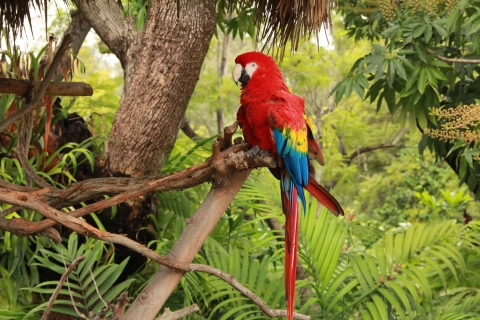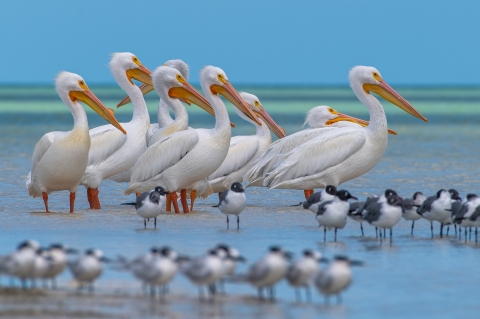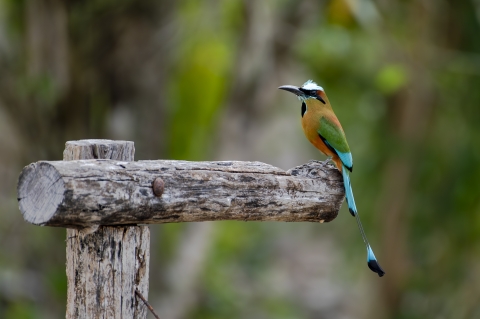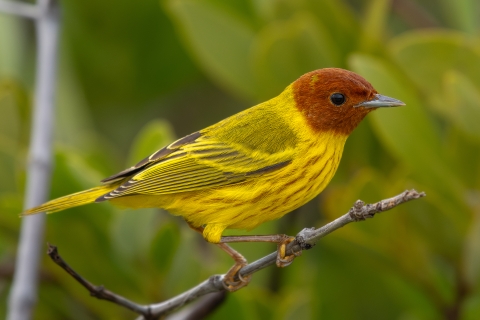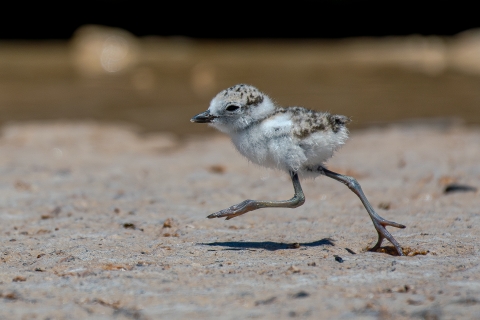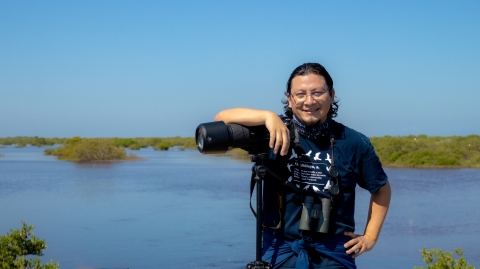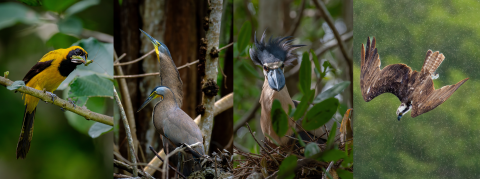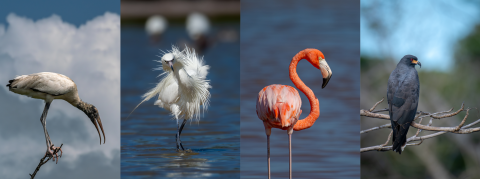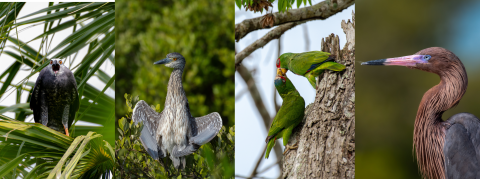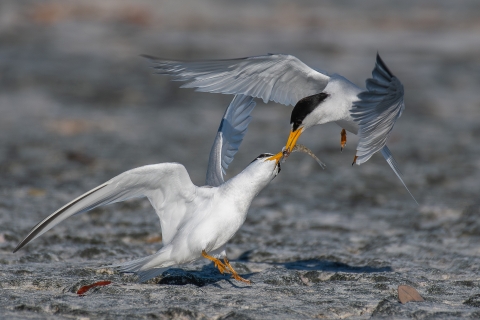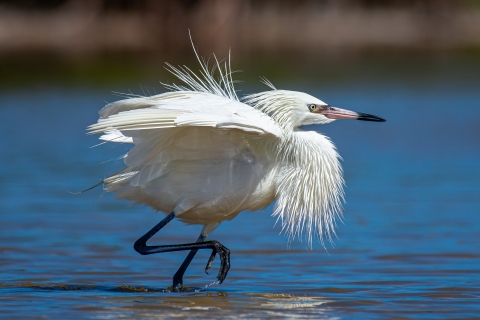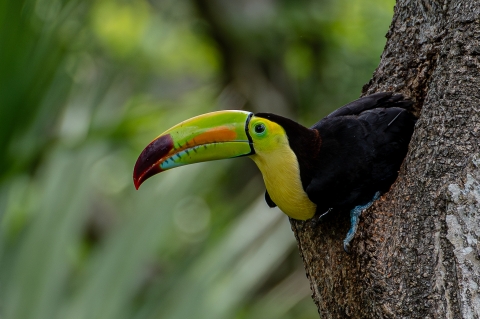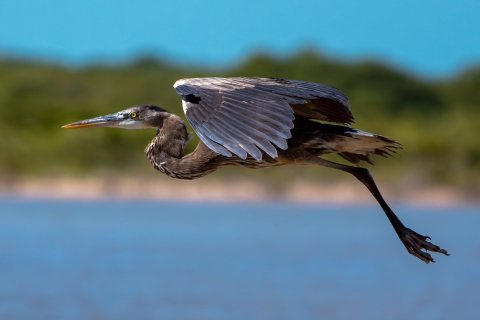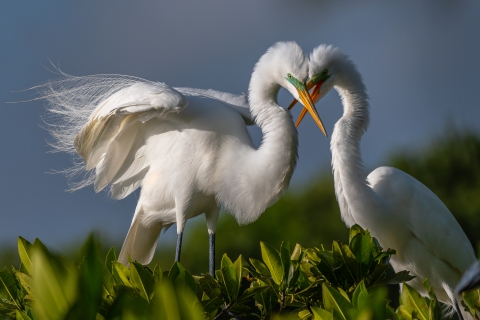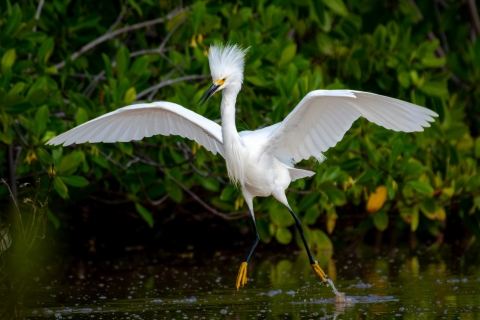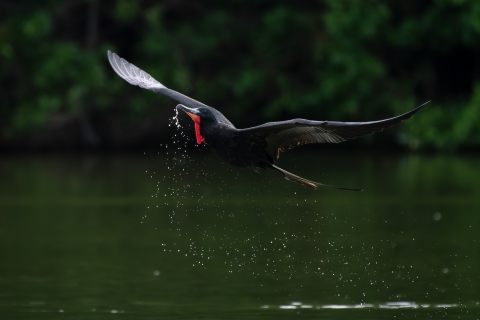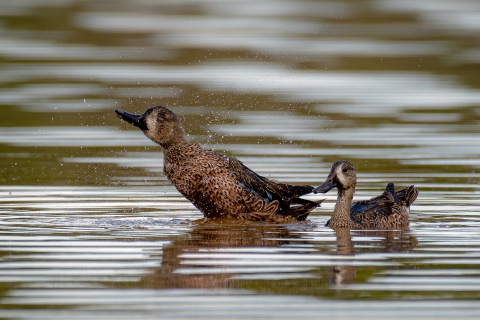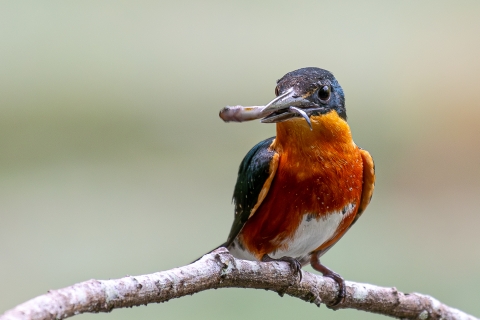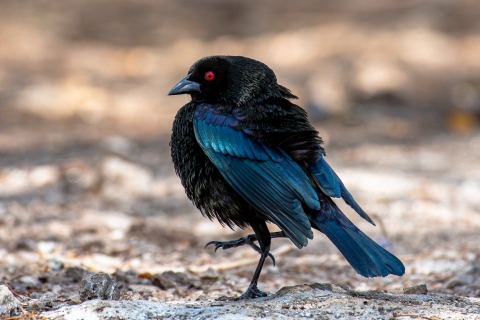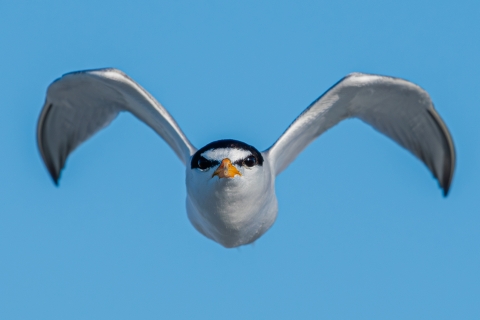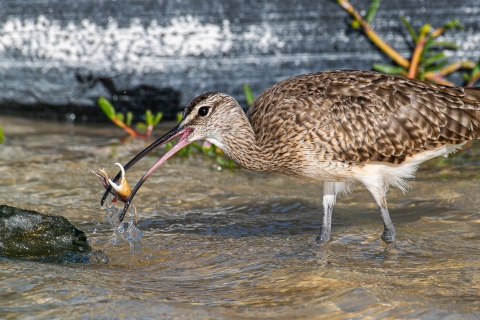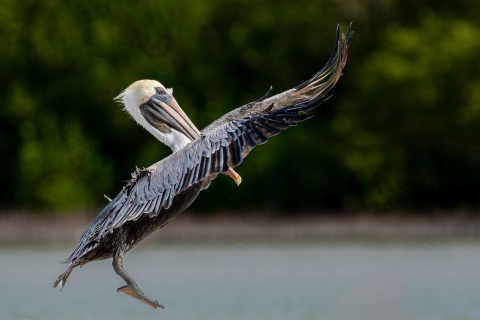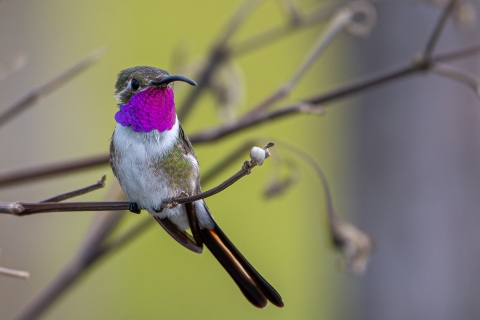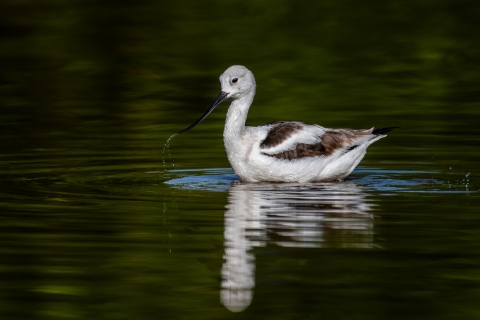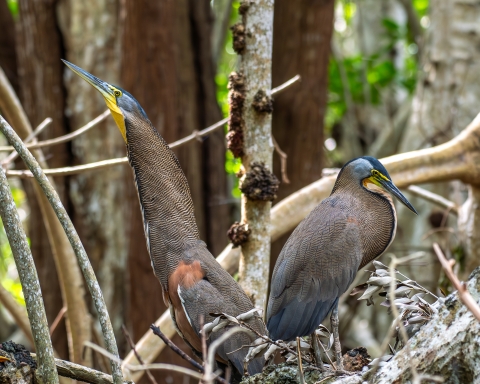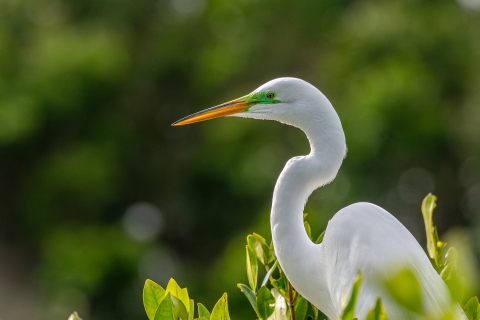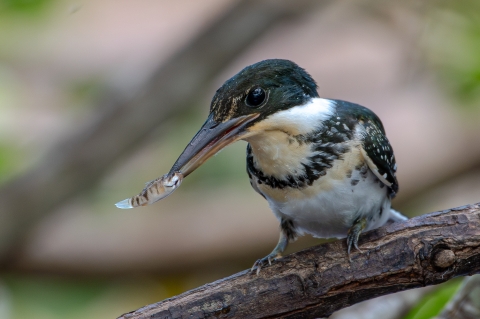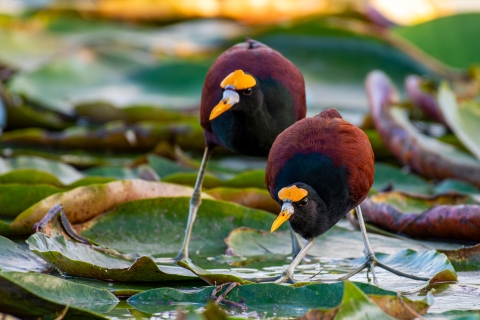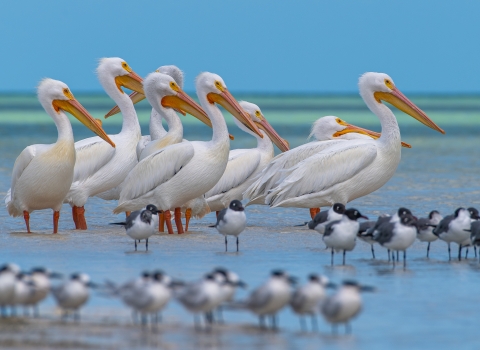Radiant red plumage of endangered scarlet macaws caught the eye of a young Ernesto Gomez as they swooped past him in the lush green rainforest of Chiapas. It was in this rare encounter that his interest in birds and conservation began. Born and raised in Mexico, surrounded by incredible biodiversity, his passion for the study of life and the living things all around him grew deeper over time. His mother, a high school biology teacher, inspired him to study biology in college. But birds were always of particular interest, and as he learned more about the threats they faced, he specialized in ornithology (the study of birds). With a camera by his side, he would spend days in the field looking for birds and other animals in tropical rainforests, dunes, beaches and cenotes (a natural pit or sinkhole). Through his lens, he found a way to bridge a connection between people and migratory birds, hoping to inspire others just as those scarlet macaws did him.
Today, Ernesto works with Pronatura Península de Yucatán (Pronatura PPY), part of the largest network of environmental conservation groups in Mexico. As the Coordinator of their Bird Conservation Program, he inspires people to live in harmony with nature, collaborating with local communities on habitat conservation and management projects that benefit migratory birds and their habitats. Recognizing the importance of this work, the Migratory Bird Program has had the honor of partnering with Ernesto and his team through two of our U.S. Fish and Wildlife Service international conservation grant programs. The North American Wetland Conservation grant program funds projects that improve wetland habitat for migratory birds, especially in Mexico and Canada; and the Neotropical Migratory Bird Conservation grant program supports projects throughout the U.S., Latin America, and the Caribbean to preserve habitats, encourage environmental education, and promote research that benefits migratory birds across their range. Reflecting on decades of our collaborations, Ernesto shares, “support from the Migratory Bird Program has been a really important opportunity” and “being able to develop projects with themes the program supports has had a very valuable impact for us."
“The North American Wetland Conservation Act [grant program] has been our best ally in recent years…these international collaborations are of the utmost importance and highly necessary,” Ernesto tells us.
As Project Officer for multiple initiatives supported through this program, he leads efforts to restore and manage critical wetland habitat in the Yucatan Peninsula, one of the world's most important landscapes for migratory birds to find food and shelter after passing the Gulf of Mexico along the Mississippi and Atlantic flyways. Beyond benefitting a large number of birds, these projects also reduce the vulnerability of coastal communities by building local capacity to adapt and analyze environmental risks. Through these partnerships, ecosystems are being revitalized and local communities are reaping the benefits across the region. Species that were absent in some areas during previous years, like American flamingo, reddish egret, sora, peregrine falcon, blue-winged teal, and Yucatan wren, have returned, leading to an increase in bird watching and a growing appreciation for the region's rich biodiversity.
Pronatura PPY's approach to community engagement has been foundational to their success. One way they inspire the community's appreciation of the rich diversity of bird species found in the state has been through the annual Toh Festival, named after the turquoise-browed motmot (known as pájaro reloj by its Mayan name), a bird of great importance in Yucatecan cosmology. Each year, from March to November, the festival hosts a variety of bird related activities from birding marathons to photo expeditions, contests, tours and workshops.
“Being with the communities... we create commitments in which both parties take actions for the benefit of the community and the ecosystems,” he states, showcasing the mutual respect and collaboration at the heart of their operations. For Ernesto, one of his proudest collaborations has been working with the dedicated “Chelemeras”, women from the Chelem community in Progreso, Yucatan, Mexico. With support from North American Wetland Conservation grant resources, these women have been leading mangrove restoration initiatives that continue to positively impact both the environment and their community.
Mangroves also happen to be among Ernesto’s favorite places to photograph birds. But no matter which habitat he finds himself in, his approach to photographing wild species is based on respect. Moving stealthily, Ernesto aims to remain as inconspicuous as possible to avoid disrupting the birds. “This is a lesson that every nature photographer must understand. Nothing is more important than the well-being of wildlife,” he reminds. Through his work, he hopes to show natures beauty in a way that moves people to want to conserve the environment and encourages others to “make the beauty of nature known, so that others can admire it.”
Bringing his camera into the field has allowed Ernesto to create media communications that support the environmental education and community outreach initiatives of Pronatura PPY. He doesn't just capture the beauty of birds—he gives people a peek into their world, inspiring them to learn more about the challenges they face, and the communities they impact. His captivating imagery aids in their mission to change perspectives of people in the Yucatan area by connecting them to their shared nature, fostering a deeper appreciation for species and their habitats.
For Ernesto Gomez, birds are a lifelong passion, a muse behind his lens, and a symbol of the region's environmental struggles and triumphs. “Meeting committed people in every corner of the Peninsula and trying to help as much as possible in the conservation and sustainable use of resources,” he says, “has been of great personal satisfaction.”
His legacy, carved through collaborations and moments captured in time, ensures that the beauty of Yucatan’s birds and habitats continue to inspire and remind us of the powerful link between people and nature. Echoing Jane Goodall, one of his biggest inspirations, he reminds us: “You cannot get through a single day without having an impact on the world around you. What you do makes a difference, and you have to decide what kind of difference you want to make.”

